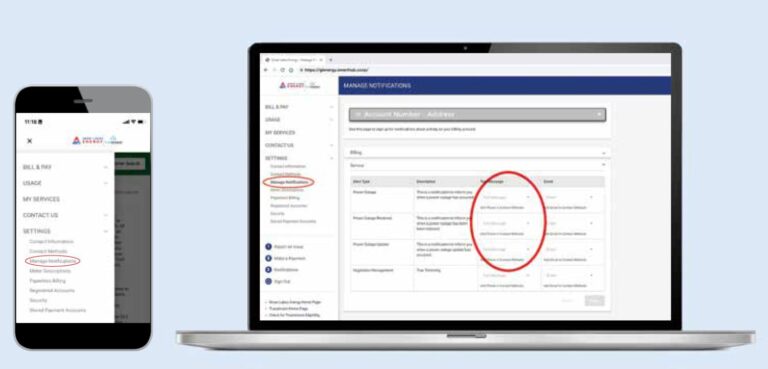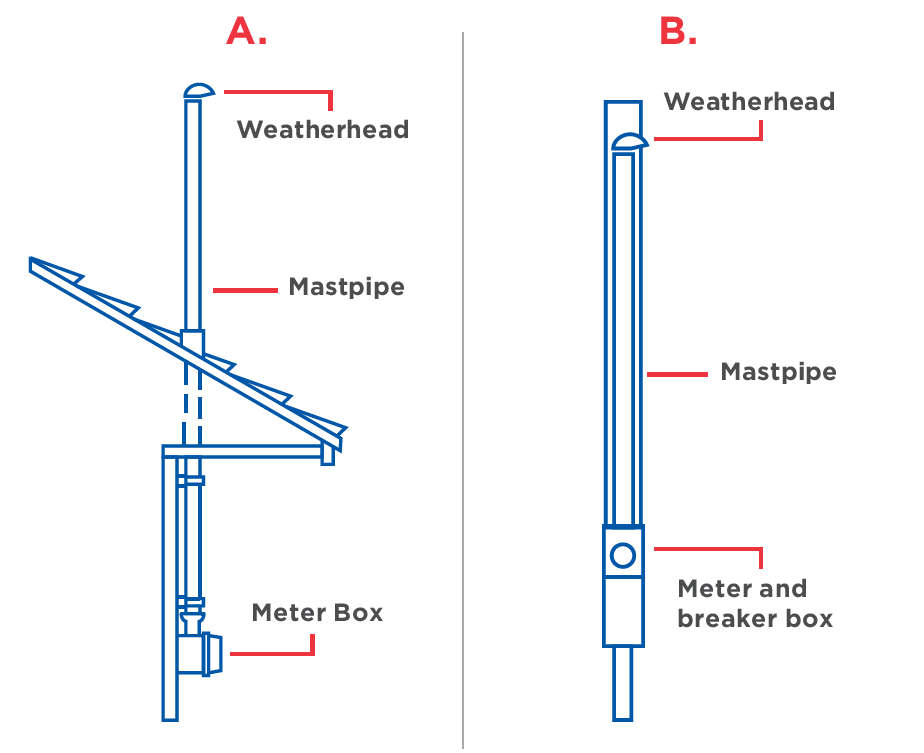Power Outages
When the power goes out, we go to work right away to get your power turned back on as safely as possible. Report your outage and get the information you need for when the storms happen.
Or call 888-485-2537. You can also use the
Great Lakes Energy app. Outages cannot be reported via email or social media.

Enroll in outage notifications
You can stay updated on outages affecting your service when you enroll in outage notifications. GLE members who enroll in the program can choose to receive outage notifications via text message, email, or both.
Members can sign up for outage notifications through their GLE online account or the GLE mobile app.
More information about GLE’s outage notifications is available here.
Weathering the storm
Want to learn more about how we restore power outages? Our employees provide a glimpse of what it takes to get your lights back on this four-minute video.
Generator essentials
Smart strategies during outages
We are ready for a storm. Are you? Please be prepared and stay safe. Watch this three minute video for some important strategies to power through outages.
Severe weather safety
Severe weather can be very dangerous. Make sure you’re stocked up on essentials in case of outages and keep yourself and your loved ones safe following these tips.
Who Takes Care of Storm Damage?
GLE’s Responsibilities:
GLE is responsible for all repairs to the power lines, including the service wires that connect to the weatherhead.
GLE is also responsible for the meter and will provide a new meter base, if needed, at no charge. Contact us once your electrician has completed repairs and the electrical inspector has approved the work.
Your Responsibilities:
A. Is your meter located on your house?
You are responsible for all equipment below and including the weatherhead, called the service entrance, EXCEPT for the meter. Contact a licensed electrician to make repairs.
B. Is your meter located on a pole?
You are responsible for all equipment below and including the weatherhead, called the service entrance, EXCEPT for the meter. You are also responsible for the pole and breaker box. Contact a licensed electrician to make repairs.

- Stay away from power lines. They are bare wires and not insulated. Downed power lines may appear to be harmless but could be live.
- If a person or object is in contact with a power line, don’t touch the person, object or line. The electric current could flow through you. Call 911 and GLE immediately!
- If your vehicle is in contact with a power line, stay inside the car. Warn others not to touch the car or the power line.
- If you must leave your vehicle, jump clear to avoid being in contact with the car and the ground at the same time and then roll away from the car.
- Close drapes and blinds on the sunny side of your home.
- During the day, go to an air-conditioned building such as a library or shopping mall.
- Wear lightweight, light-colored loose clothing. They reflect heat and sunlight.
- Drink plenty of cool liquids even if you don’t feel thirsty.
- Strenuous activities should be reduced, eliminated or rescheduled to the coolest time of the day.
- Individuals at risk should stay in the coolest available place, not necessarily indoors.
- Eat light. Avoid hot, heavy meals and opt for foods high in water content such as fruits, salads and soups.
- Take baths and showers. Because water conducts heat away from the body, bathing in tepid water is a good cooling technique.
- During an outage, turn off appliances that use lots of energy such as air conditioners. Wait until the power is restored and then turn the unit back on.
- Keep the doors of your refrigerator and freezer shut to keep the cold in.
- Gather in a central room where there is an alternative heat source such as a fireplace.
- During the day, open your blinds to let the sun warm the space.
- At night, cover windows with drapes or blankets to minimize heat loss.
- Dress in loose layers of clothing.
- If the indoor temperature drops to 55 degrees F or below, open faucets slightly so they constantly drip to prevent water pipes from freezing.
- If candles and portable heaters are used, watch children and small animals that could knock them over. Never leave these unattended.
- Avoid alcoholic beverages. Alcohol can increase the loss of body heat and risk of hypothermia.
- Never use a gas range for room heating.
- Never use charcoal as an indoor heating or cooking source.
- Never use gasoline or other flammable liquids to start or quicken a fire. Always keep a screen around an open flame, and don’t close the damper while ashes are still hot.
- Remember, a fuel-burning heater, such as a kerosene heater, requires proper ventilation to prevent buildup of harmful fumes.
- Operate the generator outdoors to avoid deadly fumes accumulating in the house.
- When using a portable generator, plug appliances directly into the generator, or have the generator properly attached to your home’s wiring by a qualified electrician. The electrician should install a special transfer switch as required by the National Electrical Code. The switch will ensure that electricity from the generator won’t back feed into electric lines or endanger line workers and others.
- Never connect a portable generator to your home’s main electrical panel; never plug it into an electrical outlet of your home.
- A dealer in generators or an electrician should be able to help you select the size of generator you need.
- Before connecting the generator to your household circuit, contact Great Lakes Energy. A special meter base is available for generators. GLE does not sell or install generators.
- Find more generator safety tips and information.

